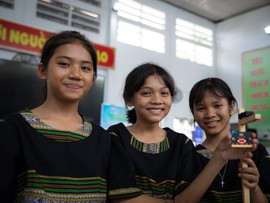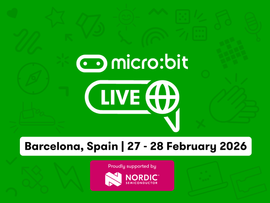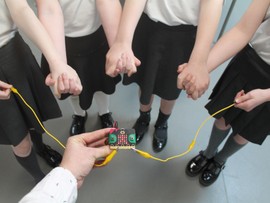micro:bit Live Virginia and California - supporting teachers in the USA
Inspiring educators, innovators and partners in Virginia and California by sharing stories, getting hands-on with the micro:bit and connecting people across the computer science world.
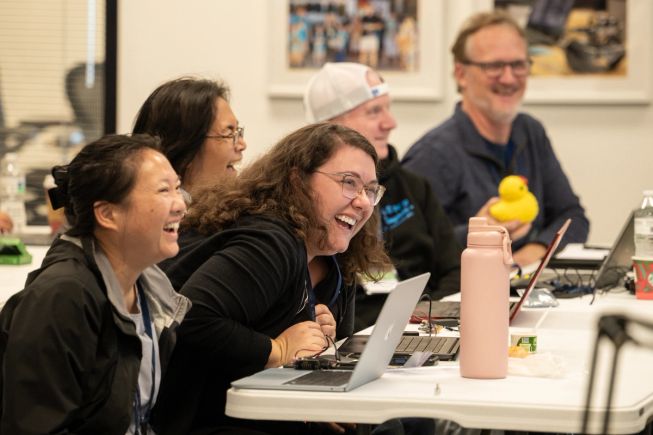
Focusing on USA’s contexts
The importance of computer science education in the USA has never been greater. With increased focus and investment in AI, it is essential to embed a strong CS foundation into the curriculum, in ways that are sensitive to the wide needs of diverse cultures across the USA.
There is much innovation happening with micro:bit, from educators, county offices, commercial organizations and more. We wanted to bring them together with micro:bit Live, to provide a space for people to learn, showcase, and connect with like-minded colleagues from throughout the CS education ecosystem.
Proudly supported by Amazon, we worked with CodeVA in Virginia and Parallax in California to co-host these events and bring this vision to life.
A wide range of topics
Both events covered a huge range of topic areas, with practical takeaways from every session:
- Get started/first time users
- Guidance and tools for integrating into curriculum, including exciting collaborations and co-design
- Ways to bring computing to life, including using monsters, comics and robots
- Applications outside of coding and computer science, including agriculture, sport, and data science
- Preparing for future digital skills, particularly AI
micro:bit Live Virginia
With a thought-provoking keynote from Pat Yongpradit (Chief Academic Officer at Code.org) on Thrival Skills in the Age of AI, the event in Virginia brought together a range of diverse audiences. With huge thanks to CodeVA for co-hosting and bringing 120 delegates together.
micro:bit Live California
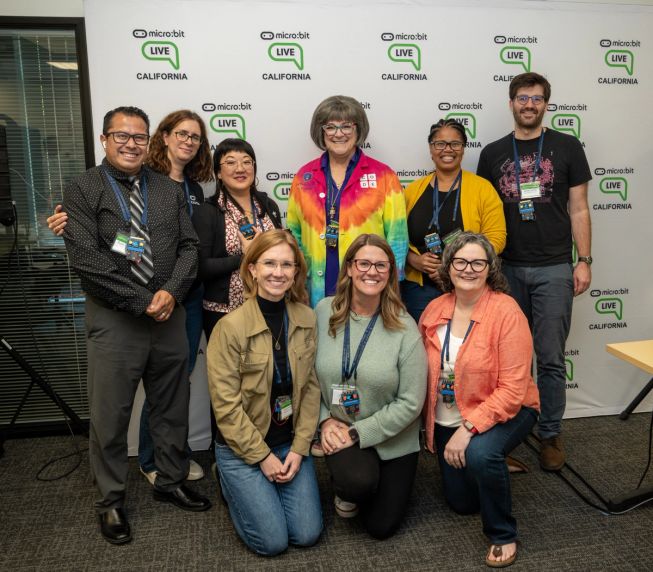
Pictured at micro:bit Live California: Rudy Escobar, Chloe Browitt, Sarah H. Chung, Sheryl Roehl, Yolanda Payne, Jonny Austin, Katie Henry, Lindsay Muñoz, and Corey Rogers
Presentations by micro:bit Champions Rudy Escobar, Sarah H. Chung, Sheryl Roehl, and Lindsay Muñoz gave exciting introductions to creative ways to use micro:bit. Bringing together 60 delegates from across the country, attendees connected over innovative tech and fascinating case studies. With huge thanks to Parallax for co-hosting.
Impacts

I've never felt part of a community like this before.

High school computer science teacher at micro:bit Live Virginia
- 180 attendees across both events
- Educators and partners from across 21 US states and Canada were in attendance
- 95% of attendees agreed that micro:bit Live had been a useful event to attend
- 95% of attendees stated that after attending micro:bit Live they were planning to teach with micro:bit more often
- 46% of attendees had not taught with micro:bit before attending micro:bit Live
- Over 90% of attendees surveyed said it was likely or very likely that they would recommend micro:bit Live
These events brought together so many people, illuminating a bigger CS community in the USA than many attendees realized. We hope that this continues to build a strong foundation for future collaboration and innovation. Huge thanks to Amazon for their generous support of both of these events.

Seeing so many educators and partners share, learn, and build at micro:bit Live reaffirmed that empowering students with computer science is not just about tools. It is about community and purpose.

Rudy Escobar, STEM and Computer Science Coordinator, Stanislaus County Office of Education/CSforCA Co-Chair

As a presenter and attendee at micro:bit Live CA, I can say it was a truly inspiring and wonderful cozy gathering. Attending the conference gave me a wider and fuller perspective of application for the micro:bit across grade levels and content areas. I left with more confidence, especially in developing AI-related content, and left with a truly warm sense of community. I was able to return to my work as a curriculum developer and program manager and share the resources I gathered with my team. I just love our micro:bit global community.

Sarah Chung, Manager of Maker Learning, The Makerspace at Center City PCS
Future steps
We want to keep making space for the micro:bit community to connect and grow in the US and across the globe. Keep a lookout for events for the community at several conferences in 2026, through a webinar series, and planning for future micro:bit Live events.
Subscribe to our newsletter to make sure you get the latest updates.
